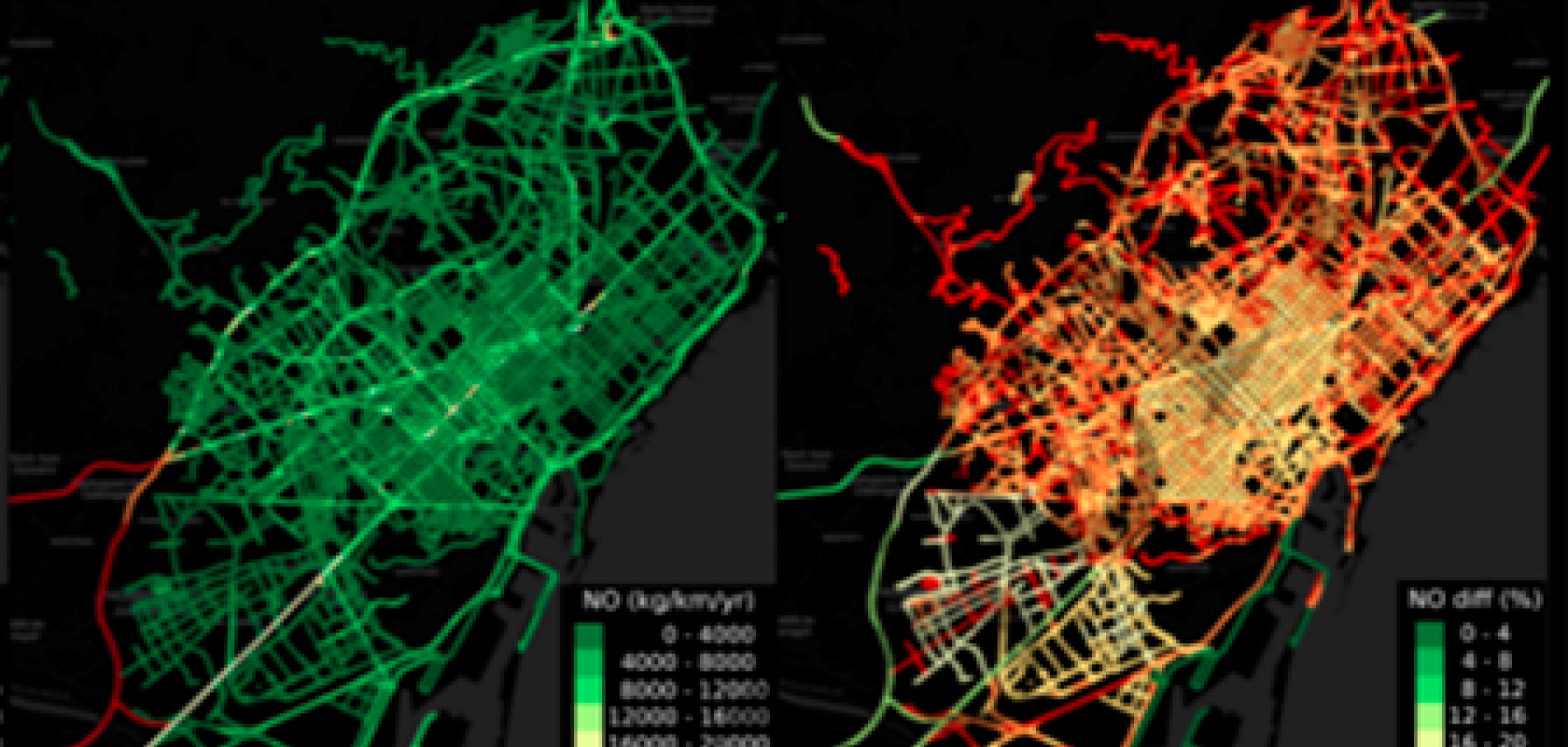Some 20 per cent of nitrogen dioxide (NO2) concentrations from vehicles in Barcelona are due to diesel cars and vans that largely exceed the European Union legal emission limits.
Previous studies have revealed that the vast majority of diesel vehicle models manufactured between 2000 and 2018 significantly exceeded the legal nitrogen oxides (NOX) emission limits. But now research from Barcelona Supercomputing Center (BSC) shows that lower-resolution modelling studies had underestimated this impact.
An article, published in Environmental Research Letters, entitled: ‘On the impact of excess diesel NOX emissions upon NO2 pollution in a compact city’, uses a new high-resolution air quality modelling tool, CALIOPE-Urban, to calculate the impact of these excess emissions across the streets of the Spanish city.
Jaime Benavides, a researcher in the Atmospheric Composition group and creator of the CALIOPE-Urban air quality modelling tool at the BSC, explains that ‘exposure to nitrogen dioxide, which is a potentially harmful pollutant for our health, is not homogeneous across city streets. For this reason, using higher resolution models, that is, on a street scale, helps us to better understand the real impact of the exposure of citizens to this dangerous pollutant.’
Another conclusion of the research is that, without the excess emissions of diesel cars and vans, the number of citizens exposed to unhealthy levels of NO2 concentrations in Barcelona would be 59 per cent. However, because of this excess, the figure rises to 70 per cent.
‘We have extrapolated the results and we have verified that, even if there had never been excess emissions from diesel cars and vans, Barcelona would continue to exceed the legal limits for NO2 air pollution at measuring stations exposed to traffic. This seems to indicate that, in addition to moving around in cleaner cars, it is necessary to drastically reduce traffic in general in order to breathe healthier air,’ Benavides comments.
This is the first time that such a comprehensive study has been carried out, at street level, on the impact of excess diesel emissions across an entire city. Only in Berlin has its impact been previously studied at this level of detail. It was calculated only in specific areas that were exposed to traffic and results were very similar to that of the BSC study. Since 2019, the German capital only allows the entry of recent diesel cars (the so-called Euro 6) into some areas of the city.
Barcelona is the city chosen for this study because it is one of the European cities with the highest density of vehicles (about 6,000 cars per km2), even ahead of Madrid or Paris (with 1,500 - 2,000 vehicles per km2). In addition, the city has a very high number of diesel cars, which represent 65 per cent of the total, as in most European cities. Another reason why Barcelona has been chosen is because of its high air pollution levels, which systematically exceed the legal threshold established by both Europe and the World Health Organization (WHO) for NO2 (nitrogen dioxide) concentrations, which is 40 micrograms per cubic meter on a yearly average.


